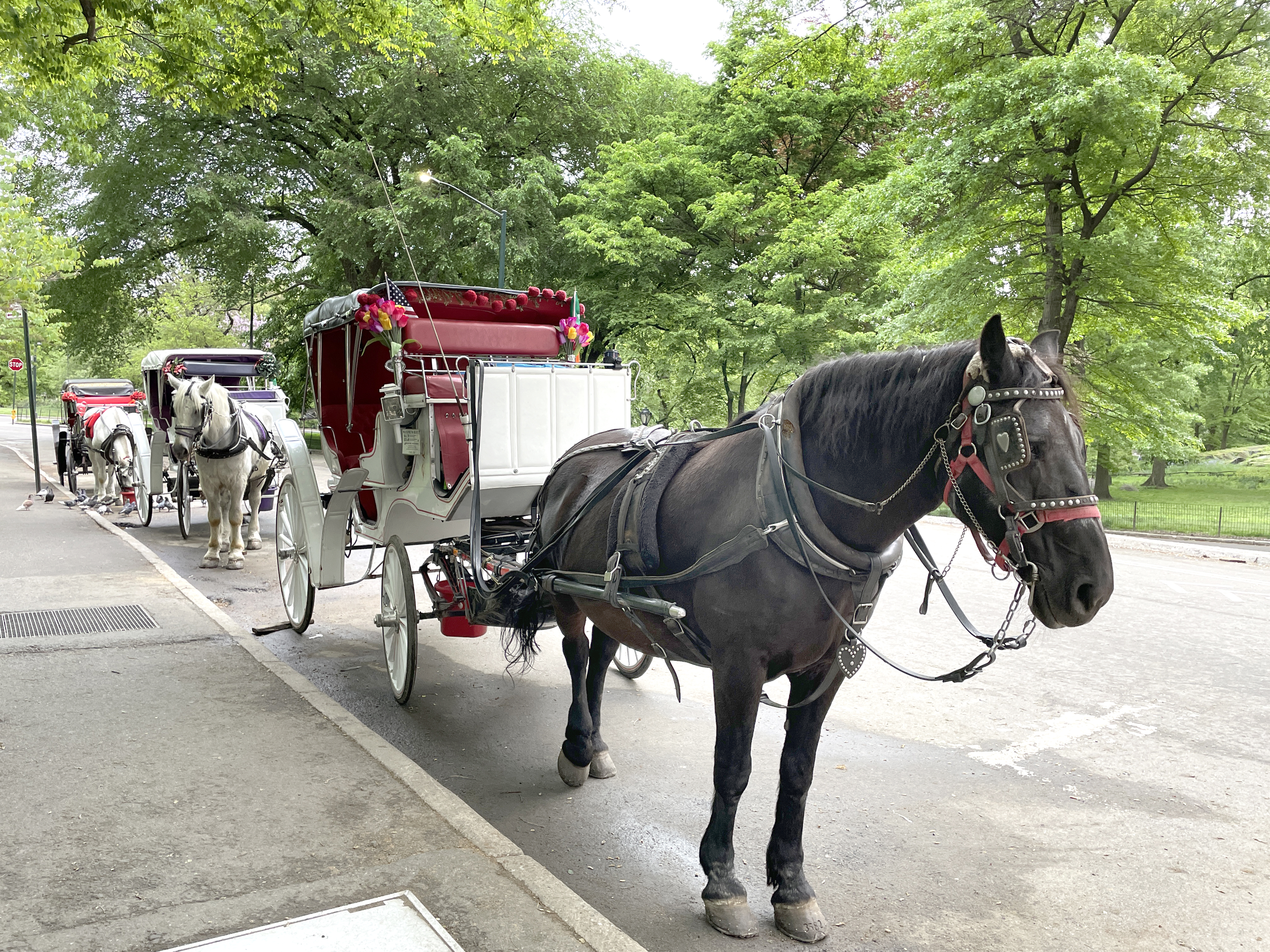Central Park Conservancy Backs Carriage Horse Ban as Mayoral Candidates Keep Mum, Tradition Isn’t Reining In

As Central Park’s carriage horses spark outrage and nostalgia in equal measure, New York politicians face an enduring question about the city’s image, its workers, and the place of tradition in modern urban life.
Shortly after midday on an otherwise unremarkable August afternoon, a horse collapsed and died while pulling a carriage through the heart of Midtown. It might have been a minor episode by the city’s tragic standards, but in New York, where symbolism often trumps substance, the incident instantly rekindled a debate that has dogged mayoral politics for decades: Should the carriage horses that ply Central Park’s leafy roads finally be put out to pasture?
The facts are straightforward. New York’s carriage horse industry, with roughly 230 licensed drivers, is both a tourist photo-op and a target for animal rights activists. The recent death served as fodder for NYCLASS, a well-funded advocacy group that helped propel Bill de Blasio’s successful 2013 mayoral campaign, after he pledged to ban the carriages outright—a pledge that faded under the weight of entrenched interests and municipal inertia. Now, as the city limps toward another electoral showdown, contenders remain largely reticent or evasive. Only Republican Curtis Sliwa has said, unequivocally, that he favours banning the carriages, while incumbent Eric Adams offers little more than promises of compromise.
This newfound standoff would hold little surprise for seasoned observers. For years, the carriage trade has enjoyed the protection of the Transport Workers Union (TWU), which also represents subway and bus employees—a potent bloc in city politics. As the horses’ future becomes a political football, TWU Local 100’s president, John Chiarello, has sharpened his rhetoric, lambasting critics as outsiders who misunderstand both “good union jobs” and the horses’ care. On Tuesday, union members marched outside the office of Councilmember Erik Bottcher, who—representing Chelsea and Greenwich Village—has irked the union with his support for removal.
Yet the debate has acquired a new twist. Betsy Smith, president of the powerful Central Park Conservancy, has, for the first time, publicly demanded an end to carriage horses in the park. Her letter to Mayor Adams invoked not just animal welfare, but also public safety and the infrastructural toll wrought by thousands of iron-shod hooves. Central Park, Smith argued, is fast becoming an anachronism when viewed through the lens of global urban best practices: Paris, London, and Toronto have long since banished such equine pageantry from their boulevards.
For New York, the implications are less quaint than existential. The image of horses clip-clopping beside high-rises is stitched into the city’s identity, adorning postcards and wedding albums from Midtown to Mumbai. But stasis risks making the city an object of ridicule—lagging behind peers who have replaced animals with electric carriages or simply paved over tradition. An industry once justified by novelty is now questioned for its modern-day necessity, and the tragic collapse of an elderly steed on blacktop bodes ill for calls to simply maintain the status quo.
Economically, carriage rides are a drop in the city’s overflowing bucket—analysts reckon they generate a few million dollars each year in direct revenues and employment. For the drivers and stable hands, however, their livelihoods are anything but trivial. Many are immigrant New Yorkers, fiercely protective of work that pays union wages and, in their telling, keeps horses treated better than most subway rats. The prospect of a ban brings anxiety about severance, retraining, and yet another sector lost to the implacable logic of modernisation.
A city confronted by tradition and transition
Politically, the issue teeters on the knife edge of competing priorities: union loyalty, animal welfare, and the performative nostalgia that attends so many New York institutions. Mayors have long resorted to studied ambiguity, preferring not to alienate either voters nostalgic for a Gilded Age tableau or an activist base with little patience for sentimentality. As the Central Park Conservancy’s intervention demonstrates, opposition is now creeping from the idealistic fringe into the civic mainstream.
Broader currents foreshadow a slow but inevitable retreat of the carriage horse. Global peers have already repudiated equine rides without precipitating economic disaster or robbing their urban centres of charm. Paris swapped its horses for electric vehicles with little outcry, and Vienna—where fiakers are more sacred than bagels in Brooklyn—has seen declining horse numbers as militant activism and changed consumer tastes collide. For New York, the pace will be determined less by strident advocacy than by an accumulation of high-profile mishaps, stealthy regulatory changes, and the market’s own verdict.
What does this portend for New Yorkers, gritty and sentimental in equal measure? On one hand, they may lose a timeworn symbol—though, as other cities attest, nostalgia rarely fills potholes or soothes outrage after a fresh collapse. On the other, the city has a puny appetite for outright bans; it more often regulates inconvenient traditions into bureaucratic irrelevance. Carriages may outlast naysayers yet, saddled with new safety rules, stringent licensing, or a phaseout scheme masquerading as compromise.
We remain sceptically optimistic, if only because New York’s capacity for pragmatic reinvention routinely confounds the pessimists. The challenge lies in balancing sentimental attachments with hard-edged policy—ensuring that compassion for animals is not mere cover for chipping away at good jobs, and that modernisation does not degenerate into hollow gestures. If political leaders muster the will, New York could, with a deftness befitting its reputation, retire the last carriage horses with dignity and set a model for other cities bound by their own curious traditions.
Until then, the fate of Central Park’s carriage horses remains a test of whether New York cares more about its mirror or its future. ■
Based on reporting from Gothamist; additional analysis and context by Borough Brief.